
Japanese aquarium (1775)

Aquarium (1840)

"Universe" - january 1912
In ancient China people were breeding goldfish which resulted in the creation of many varieties of this beautiful fish. Some variants this species:
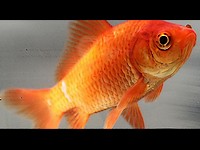
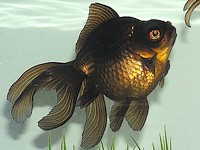
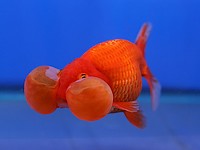
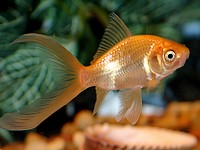




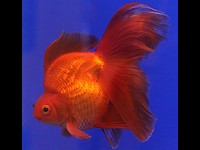
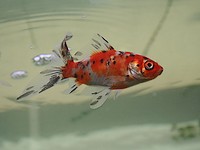
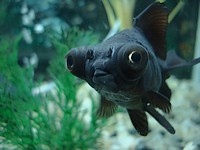
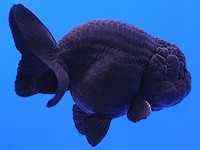



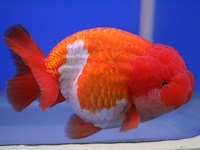
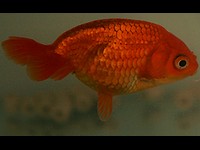

Red blood nobody surprise. We know also about blue-blood noble or aristocratic representatives e.g. from the litreature. But yellow-transparent blood can surprise many a people. In nature is saltwater fish from Channichthyidae family - the only vertebrate without hemoglobin in its blood, so this blood doesn't have its characteristic colour. Then oxygen is dissolved in the plasma and transported along with it throughout the body of the fish. The species can live without hemoglobin because its metabolism is slow and it lives in waters with a high solubility of oxygen and low temperature (Arctic and Antarctica). Name of described species is the crocodile icefish or white-blooded fish.
We know about beneficial effects of a fish meat for the human body. But in nature is about 400 species freshwater and saltwater fish and their consumption may cause adverse symptoms of food poisoning for humans. In Europe is several toxic fish, inter alia the Common barbel (Barbus barbus), the European eel (Anguilla anguilla) and the Northern pike (Esox lucius). The Common barbel has toxic its meat and roe during the spawning season. The European eel has poisonous its blood and this blood causes poisoning similar to a snake venom. The Northern pike has highly toxic its roe.
It would seem that Indians from South America who live in the wild and inaccessible jungle don't pay too much their attention on their hairstyle or hair length. Nothing could be further from the truth. They also cut their hair but they use for that the jaws of the piranhas and their super-sharp teeth as befits the people of the forest. Nothing can be wasted.
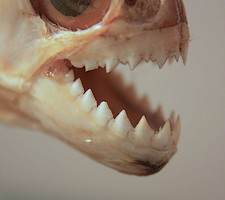
The Alaska blackfish (Dallia pectoralis) can survive up to 7 months in frozen water in hibernation. For this purpose it buries into the substrate at depth of 7-8 meters.
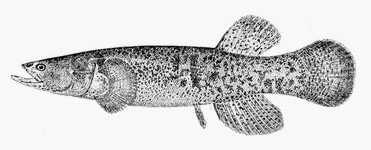
The Danio zebra (Danio rerio) can regenerate its damaged heart, fins and skin, even brain in larval stage. Regeneration of the heart is the backflow of mature cells to the state of stem cells. Then these cells another specialize when they develop. These abilities are the subject of various researches scientists, especially geneticists.
The smallest and eatable fish in the world is the Sinarapan (Mistichthys luzonensis). Males this species can grow to 25 mm and this species was placed in the Guinness World Records book. This species was nearing extinction. Appropriate services try to increase their population and they transfer the fish to safe habitats since 1990s.
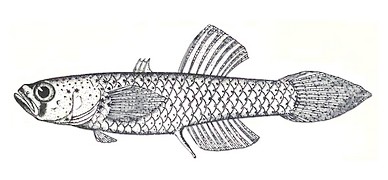
Yes, it is possible. Female of sealtwater fish The Ocean sunfish (Mola mola) can once lay up to 300 million eggs. This species is the heaviest osteichthyes fish in the world. The fish weighs about 1 ton.
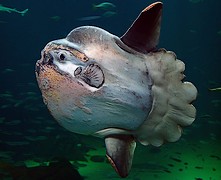
The fastest fish in the world is the Atlantic sailfish (Istiophorus albicans). This is a saltwater species and it can swim with speed up to 100 km/h (62 mph). Its weight is over 50 kg and it is 3 m long (about 10 ft). The fish often spreads its magnificent, sail-shaped dorsal fin above the water surface.

Wikipedia/Citron/CC 3.0

Wikipedia/Benjamint444/GNU
Yes, it is possible. An example would be Nicaragua Lake in Nicaragua. There is a very aggressive the Bull shark (Carcharhinus leucas). This shark can grow to 3 m (about 10 ft) and it raises terror in this area. Initially this shark was considered endemic species for the Nicaragua Lake. Next, scientists thought that this shark was trapped in the lake during its formation and the fish adapted to local conditions. Now we know that these sharks migrate freely between the lake and the Caribbean Sea with water flows of the San Juan River (this river connects both reservoirs).

The biggest fish in the world is the Whale shark (Rhincodon typus). It can grow to 20 m (66 ft) and it weighs up to 25 tons. This species exists on earth about 60 million years and it has the thickest skin compared to other animals. There is no greater threat to humans but the shark can attack if provoked. This species feeds plankton, roe and fry other fish. It can live to 70 years.

Wikipedia/Zac Wolf/CC 2.5
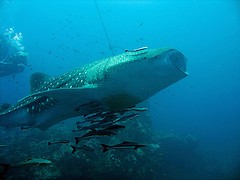
Wikipedia/Schützenhofer Christoph/GNU
The smallest fish in the world is the Paedocypris progenetica since 1996s. It is freshwater species from cyprinidae family. The fish can grow to 7.9 mm. This species was discovered in Sumatra and Bintan Island. Described fish is smaller than previous champion the Schindleria brevipinguis by 0.5 mm.
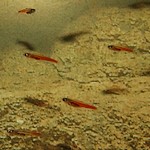
Not only people beat Guinness World Records but also the animals. The biggest freshwater fish in the world is the Mekong giant catfish (Pangasianodon gigas) since 2005s. The champion comes from Thailand (around Mekong River) and it was 270 cm long.
Cuckoo Catfish (Synodontis multipunctatus) likes to toss its eggs as a cuckoo. It uses for this mouthbroading cichlids. The spawning of the cichlids initiates spawning of described fish. The female of cichlid collects in her mouth own eggs and eggs of the synodontis. The catfish eggs hatch much quicker than cichlid eggs. Then the fry of the catfish starts to eat cichlid eggs and parents of the cichlid take care and protect catfish fry as their own.
The Electric eel (Electrophorus electricus) can generate short-lived (below 2 ms) but powerful electric shocks with voltage up to 600 V and current 1 A. This species has 3 pairs of organs that produce two types of electrical discharges: low and high voltage. The anatomy of the fish causes that electricity arises in effect sudden potential difference – similar to a car battery.

Fish from Xiphophorus family are able to change their sex. Female can transform to male and is able to breed (but it can be late maturing male). Male also can transform to female and then he/she still has gonopodium (external copulatory organ). This situation often happens when we have mature and magnificent male with young males in one aquarium.
The fish have different senses - sight, smell, lateral line etc. Some species have extra ability to acquire information from their environment. Example of this ability is electroreception – detection of electrical impulses. This ability have sharks. They have type of electroreceptors – the ampullae of Lorenzini. This is type of jelly-filled pores. These pores work as semiconductor that can detect signals from the outside. These signals are produced by the external sources. In this way the fish can locate a prey, can protect themselves against the threats and can “see” landform features.
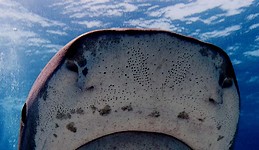
When you take your boat trip on the Mississippi River in the US, you may get in big trouble. The river was attacked by a plague of fish from cyprinidae family: the Silver carp (Hypophthalmichthys molitrix). These fish weigh up to 40 kg and they escape from local fish farms during the flood. These fish are very voracious and fertile. They ravage the river and they displace native species. The fish also jump out of the water and they are dangerous for the tourists and anglers.
If you found any interesting information or trivia please send them to us via contact form provided.. Send your nick or name or nationality with it. We will add it to the website with your name.